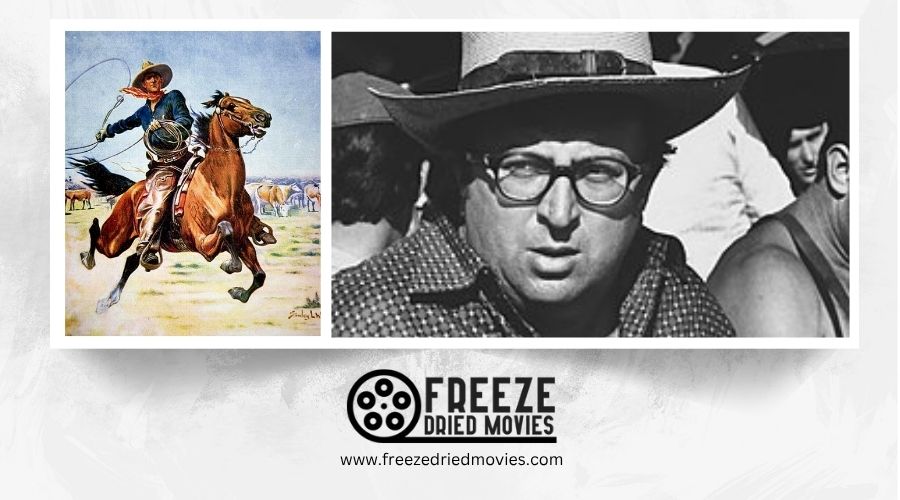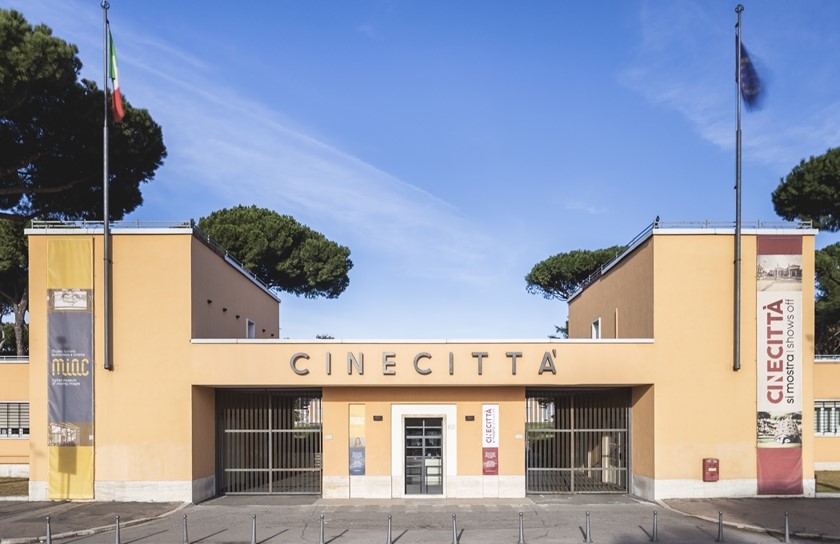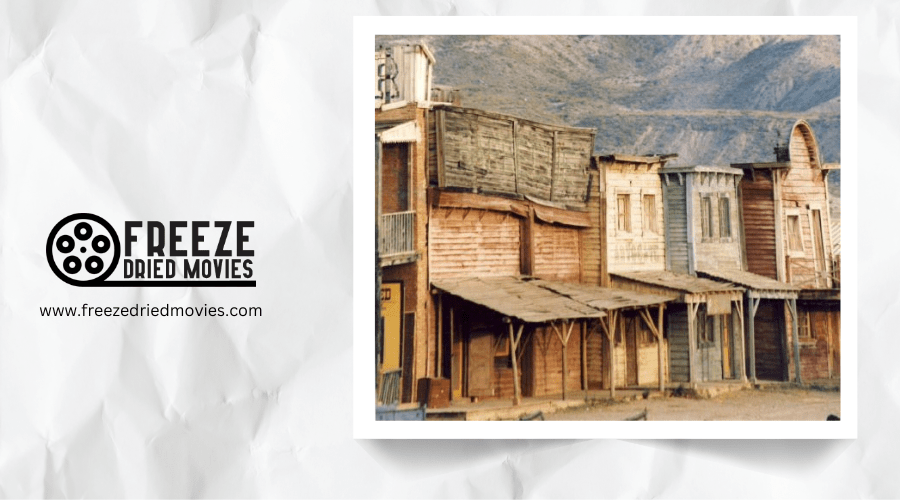Italian–Spanish Co-Productions: Funding Spaghetti Western Classics

You're likely familiar with the iconic visuals of Spaghetti Westerns - the dusty landscapes, squinting gunslingers, and unforgettable musical scores. But have you considered the financial machinery that made these cinematic gems possible? Behind Leone's masterpieces and the genre's global success lies an innovative Italian-Spanish partnership that transformed filmmaking economics.
These cross-border collaborations created a blueprint for international film financing that continues to influence production strategies today. What made this unlikely alliance so remarkably effective?

The Economic Partnership: How Italian-Spanish Financing Shaped the Genre
Necessity drove the innovative financial framework that birthed the spaghetti western. You'll find that international co-productions between Italy and Spain provided the economic foundation that made these films possible. By pooling resources, producers created low-budget productions with remarkable impact, employing Italo-Spanish technical staff to maximize efficiency.
This partnership enabled filming across southern Italy and Spain's Almería region, whose arid landscapes perfectly mimicked the American frontier at a fraction of Hollywood's cost. The success of Sergio Leone's Dollars Trilogy validated this model, establishing the genre's distinctive visual style, narrative tropes, and iconic musical scores. Much like the Ealing Comedies of British cinema, these films reflected a significant transition in European filmmaking priorities during the post-war era.
With over 600 European westerns produced between 1960-1978, this economic collaboration proved that financial constraints could foster artistic innovation rather than limit it.

Studios and Production Companies Behind the Collaboration
Powerhouse partnerships formed the backbone of the spaghetti western movement. When you explore the magic behind these films, you'll find Italian-Spanish film industry collaborations at their core. Cinecittà Studios in Rome served as the primary production hub, while locations across southern Italy and Spain provided authentic desert landscapes.
Key players like Jolly Film, Produzioni Europee Associati (PEA), and Arturo González Productions financed these international co-productions, allowing visionary Italian directors including Leone, Corbucci, and Tessari to work their magic. They partnered with Spanish technical staff and international casts to create the genre's distinctive style.
The low-budget nature of these collaborations wasn't a limitation—it became a creative advantage, fostering unconventional filmmaking approaches that continue to influence cinema today. These innovative collaborations emerged during a period when the Big Five studios dominated Hollywood's landscape, providing an alternative creative voice to mainstream American westerns.
Key Players: Influential Producers and Financiers
- Benito Perojo bridged Italian-Spanish partnerships, securing essential Spanish filming locations
- Aldo Tonti's cinematography established the genre's iconic visual identity
- Luciano Vincenzoni's screenwriting skills shaped narratives in hits like "For a Few Dollars More"
- Cross-border financing strategies maximized resources while reducing individual risk
- These co-productions created a unique European filmmaking ecosystem that thrived outside Hollywood
- The collaborative approach between Italian and Spanish filmmakers mirrored the optical effects techniques that revolutionized 1930s cinema through artistic cooperation.
Tax Incentives and Government Support for Co-Productions
Behind the dusty facades and gunslinging action of spaghetti western classics lay intricate financial frameworks that made these films possible. You'll find that government support from both Italy and Spain created the economic foundation for these iconic films.
Italy's Legge Cinema allowed production companies to deduct up to 20% of costs when partnering with foreign collaborators, while Spain's Dirección General de Cinematografía offered even more generous terms—up to 50% financing for co-productions utilizing Spanish locations and crews. These tax incentives and government subsidies transformed what would have been limited Italian productions into international collaborations with expanded resources.
The strategic partnership between these Mediterranean nations wasn't merely artistic—it was financial engineering that sustained the genre, enabling even lower-budget westerns to access sufficient financing during the genre's 1960s-70s heyday.
Distribution Strategies and International Market Access
The success of Italian-Spanish co-productions broke through traditional market barriers by employing sophisticated distribution strategies that maximized their global reach. By combining resources, these international co-productions accessed diverse financing sources from multiple European countries while creating films that would appeal across borders.
- You'd find international casts featuring American and British actors to attract wider international audiences
- Films were dubbed into multiple languages, enabling seamless distribution across Europe
- Strategic use of production facilities and filming locations in both countries reduced costs dramatically
- Co-production agreements opened doors to markets that would otherwise remain closed
- Distribution rights were often pre-sold to various territories, reducing financial risk before production began
This sophisticated approach transformed low-budget Westerns into global phenomena that could compete with Hollywood productions despite their modest origins.
Budget Management: Creating Epic Visuals on Limited Resources
Despite working with fractions of Hollywood's financial resources, Italian-Spanish co-productions created visually stunning Western epics that rivaled their American counterparts through ingenious budget management techniques. You'll find Techniscope cinematography was fundamental to this success, allowing filmmakers to achieve widescreen visuals while considerably cutting film costs.
International co-productions between Italy, Spain, and occasionally other European partners pooled limited resources, maximizing visual impact despite low budgets. Crews embraced location filming across Spanish deserts and southern Italy, incorporating natural landscapes rather than constructing expensive sets. When sets were needed, filmmakers repurposed existing structures at Cinecittà studios, building only essential elements.
This efficient filmmaking approach demanded fast production schedules, with teams often improvising solutions on set—creating the distinctive, gritty aesthetic that defines the spaghetti Western genre.
The Legacy of Co-Production: Financial Models That Changed Cinema
Groundbreaking in their approach to international finance, Italian-Spanish co-productions created a revolutionary funding template that would transform cinema well beyond the Western genre. You're witnessing the birth of modern cross-border filmmaking arrangements when you study these influential partnerships that turned low-budget productions into international phenomena.
Shared financial risks allowed filmmakers to pursue ambitious visions despite limited resources. Expanded distribution networks gave these films unprecedented global reach. Co-production models demonstrated commercial viability that attracted additional investors. International talent pools fostered creative exchange that enhanced production values. Financial arrangements created a sustainable system for continued genre development.
These pioneering structures didn't just make iconic Westerns possible—they established enduring co-production frameworks that continue to influence how independent films secure funding and distribution worldwide today.
Andrea Martella, Ingressostorico cinecitta, CC BY-SA 4.0



